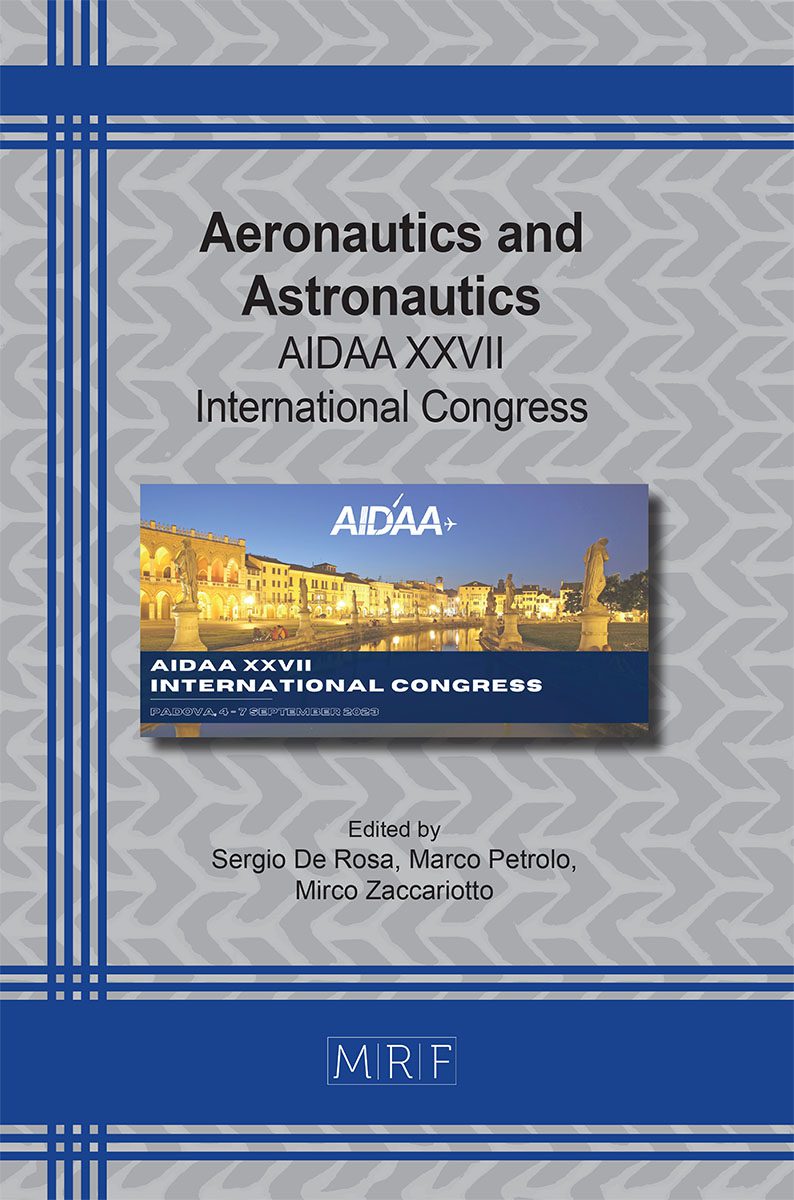Multi-step ice accretion on complex three-dimensional geometries
Alessandro Donizetti, Tommaso Bellosta, Mariachiara Gallia, Andrea Rausa, Alberto Guardone
download PDFAbstract. This work presents the Politecnico di Milano Icing Research Group’s contribution to developing new numerical tools and methodologies for simulating long-term in-flight icing over complex three-dimensional geometries. PoliMIce is an in-house ice accretion software that includes state-of-the-art solvers for the dispersed phase to compute the droplets’ impact on the aircraft, and ice accretion models, including the exact local solution of the unsteady Stefan problem. PoliMIce has also been extensively developed for the simulation and robust design optimization of thermal ice protection systems. A crucial aspect that characterizes and makes numerical simulations challenging is the formation, and evolution in time of complex ice geometries, resulting from the ice accretion over the body surface and/or previously formed ice. A multi-step procedure is implemented since the aerodynamic flow field is coupled with ice accretion. The total icing exposure time is subdivided into smaller time steps. At each time step, a three-dimensional body-fitted mesh suitable for the computation of the aerodynamic flow field around the updated geometry is generated automatically. The novel remeshing procedure is based on an implicit domain representation of the ice-air interface through a level-set method and Delaunay triangulation to generate a new conformal body-fitted mesh. In this work, the unique capabilities of the PoliMIce suite are employed to perform automatic multi-step ice accretion simulations over a swept wing in glaze ice conditions. Numerical simulations are hence compared with the available experimental data.
Keywords
In-Flight Icing, Multi-Step, Level-Set Method, Unstructured Grids, Mesh Adaptation
Published online 11/1/2023, 5 pages
Copyright © 2023 by the author(s)
Published under license by Materials Research Forum LLC., Millersville PA, USA
Citation: Alessandro Donizetti, Tommaso Bellosta, Mariachiara Gallia, Andrea Rausa, Alberto Guardone, Multi-step ice accretion on complex three-dimensional geometries, Materials Research Proceedings, Vol. 37, pp 184-188, 2023
DOI: https://doi.org/10.21741/9781644902813-40
The article was published as article 40 of the book Aeronautics and Astronautics
![]() Content from this work may be used under the terms of the Creative Commons Attribution 3.0 license. Any further distribution of this work must maintain attribution to the author(s) and the title of the work, journal citation and DOI.
Content from this work may be used under the terms of the Creative Commons Attribution 3.0 license. Any further distribution of this work must maintain attribution to the author(s) and the title of the work, journal citation and DOI.
References
[1] M. Gallia, B. Arizmendi Gutierrez, G. Gori, A. Guardone et P. M. Congedo, «Robust Optimization of a Thermal Anti-Ice Protection System in Uncertain Cloud Conditions,» Journal of Aircraft, pp. 1-15, 2023. https://doi.org/10.2514/1.C037223
[2] W. B. Wright, «User Manual for the NASA Glenn Ice Accretion Code LEWICE,» 2002.
[3] H. Beaugendre, W. Habashi et F. Morency, «FENSAP-ICE’s three-dimensional in-flight ice accretion module: ICE3D,» Journal of Aircraft, vol. 40, pp. 239-247, 2003. https://doi.org/10.2514/2.3113
[4] D. de Rosa, F. Capizzano et D. Cinquegrana, «Multi-step Ice Accretion by Immersed Boundaries,» chez International Conference on Icing of Aircraft, Engines, and Structures, 2023. https://doi.org/10.4271/2023-01-1484
[5] M. Morelli, B. Tommaso, A. Donizetti et A. Guardone, «Assessment of the PoliMIce toolkit from the 1st AIAA Ice Prediction Workshop,» chez AIAA AVIATION 2022 Forum, 2022. https://doi.org/10.2514/6.2022-3307
[6] T. D. Economon, F. Palacios, S. Copeland, T. Lukacyzk et J. Alonso, «SU2: An Open-Source Suite for Multiphysics Simulation and Design,» AIAA Journal, vol. 54, pp. 828-846, 2015. https://doi.org/10.2514/1.J053813
[7] T. Bellosta, G. Baldan, G. Sirianni et A. Guardone, «Lagrangian and Eulerian algorithms for water droplets in in-flight ice accretion,» Journal of Computational and Applied Mathematics, vol. 429, 2023. https://doi.org/10.1016/j.cam.2023.115230
[8] G. Baldan, T. Bellosta et A. Guardone, «Efficient Lagrangian particle tracking algorithms for distributed-memory architectures,» Computers & Fluids, vol. 256, 2023. https://doi.org/10.1016/j.compfluid.2023.105856
[9] B. Messinger, «Equilibrium Temperature of an Unheated Icing Surface as a Function of Air Speed,» Journal of the Aeronautical Sciences, vol. 20, pp. 29-42, 1953. https://doi.org/10.2514/8.2520
[10] T. Myers, «Extension to the Messinger model for aircraft icing,» AIAA Journal, vol. 39, pp. 211-218, 2001. https://doi.org/10.2514/3.14720
[11] G. Gori, G. Parma, M. Zocca et A. Guardone, «Local Solution to the Unsteady Stefan Problem for In-Flight Ice Accretion,» Journal of Aircraft, vol. 55, pp. 251-262, 2018. https://doi.org/10.2514/1.C034412
[12] M. Gallia, A. Rausa, A. Martuffo et A. Guardone, «A Comprehensive Numerical Model for Numerical Simulation of Ice Accretion and Electro-Thermal Ice Protection System in Anti-icing and De-icing Mode, with an Ice Shedding Analysis,» chez International Conference on Icing of Aircraft, Engines, and Structures, 2023. https://doi.org/10.4271/2023-01-1463
[13] A. Donizetti, T. Bellosta, A. Rausa, B. Re et A. Guardone, «Level-Set Mass-Conservative Front-Tracking Technique for Multistep Simulations of In-Flight Ice Accretion,» Journal of Aircraft, pp. 1-11, 2023. https://doi.org/10.4271/2023-01-1467
[14] A. Donizetti, A. Rausa, T. Bellosta, B. Re et A. Guardone, «A Three-Dimensional Level-Set Front Tracking Technique for Automatic Multi-Step Simulations of In-Flight Ice Accretion,» chez International Conference on Icing of Aircraft, Engines, and Structures, 2023. https://doi.org/10.4271/2023-01-1467












